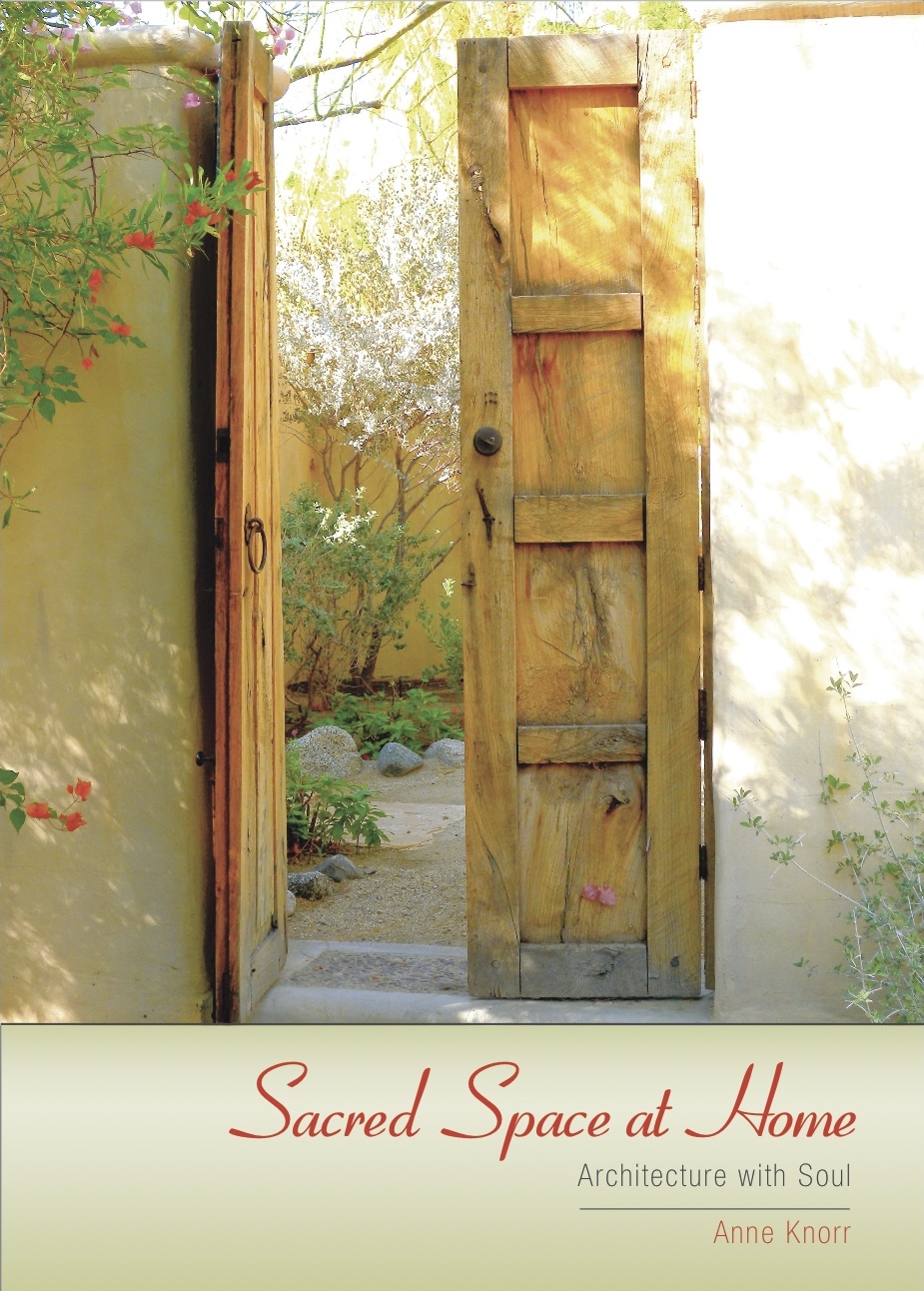Overview
Over the last decade there has been a growing interest in the dynamic relationship between spirituality and architecture. The physical spaces we inhabit on a daily basis have an impact on our sense of well-being, body, mind and spirit. In turn, the energy we bring into our living environments has an impact on it as well. Discovering how this connection works in our home is the focus of Sacred Space at Home. My personal journey exploring the interface between architecture and spirituality began in 1998 when I participated in a program to learn the subtle art of spiritual direction, companioning a person on his or her spiritual journey. During the coursework I found myself wondering how spirituality, the center of my personal life, and architecture, the center of my professional life, interface. At some level, I knew they were both about space. Architecture deals with the physical and tangible space of structures, while spiritual direction delves into the internal space of spirit, emotion and personality. Each influences the other. Sacred Space at Home is the culmination of my inquiry into the link between the two.
"The People whose lives are lived simply and wholesomely, in the open, and who have, in a high degree, the sense of the sacredness of the home, are the people who have made the greatest strides in the development of the race."
- Gustav Stickley
Simplicity and Domestic Life
In my experience of bringing the sacred into my own home and the homes of my clients, I've found it can be as simple as rearranging a single room or as extensive as remodeling an entire house. The main ingredient is a willingness and desire to make your home sacred. The guiding principles for creating sacred space apply regardless of the resources available to a person. You don't need to be a millionaire to have a sacred home.
Sacred Space at Home uses an ancient structure, the Tabernacle, as a template for creating sacred environments. The Tabernacle was a large tent used by the nomadic Jewish people as a place of worship. Extensive descriptions of the tent and its contents written in sacred text provide a blueprint for the divinely inspired structure. It housed three main spaces:
- The Court: Public Space
- The Holy Place: Private Space
- The Holy of Holies: Intimate Space
Each space had unique qualities, yet there was a fluid movement weaving through them that bound them together. This simple pattern of three can be applied to the places where we live and goes beyond the physical realm and speaks to the interior space of spirit as well. Like the Tabernacle, our interior sanctuary needs to include spaces that are public, private, and intimate. Our lives are enriched when we interact with others in community but also when we allow time for stillness and time to be with those we love. As we move across the continuum between activity and solitude, we can find a balance that resonates with our soul. When the spaces in our home mirror our personal inclinations, we feel supported both physically and spiritually. Being in community may energize some of us, while time alone may nourish others. Regardless of our leaning, to feel at peace in our dwelling and within ourselves, all three spaces need to be present. The more our home follows the pattern of the Tabernacle and is attuned to our personal rhythms, the more it will feel like sacred space.
The first chapters of this book explore our intuitive ability to find or create a sanctuary for our self, and the archetypal patterns that help articulate what that is. Along with the pattern of three, the Tabernacle reveals the significance of doorways, rituals, meaningful objects, and beauty in the design of sacred spaces. Architectural basics about scale, proportion, color, and light are discussed in later chapters as well as principles of Feng Shui. The final chapter offers practical suggestions for transforming your home into a personal sanctuary by incorporating focal points, mindfully placing furniture, and above all, engaging a sense of play. This book can be used as a workbook if you choose to engage the exercises at the end of each chapter, or merely read to broaden your understanding of sacred space. My hope is the guiding principles found in the Tabernacle will enrich your dwelling, particularly the notion of making a space for yourself.
Table of Contents
Introduction ~ Architecture and Spirit
Chapter One ~ Intuitive Understanding of Sacred Space
Chapter Two ~ The Tabernacle as Archetype for Sacred Space
Chapter Three ~ A Closer Look at the Holy of Holies
Chapter Four ~ More Patterns of Sacred Space
Chapter Five ~ Architectural Basics
Chapter Six ~ Architectural Details
Chapter Seven ~ Key Ingredients for Getting Started










